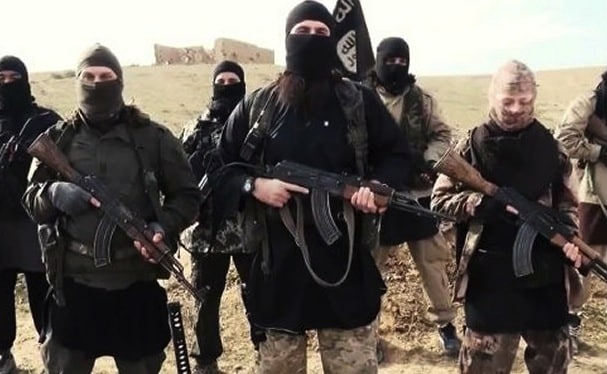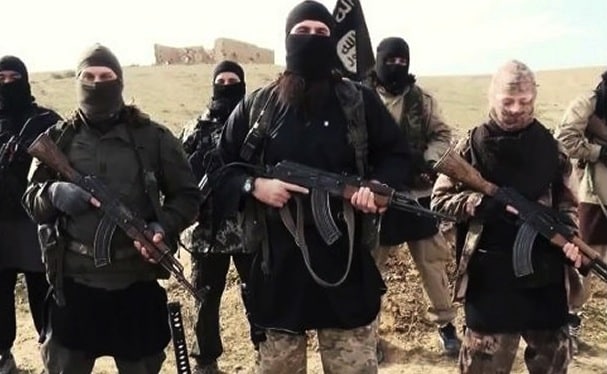Tehran has begun highlighting in loud decibel its hitherto-low key voice of disquiet that the United States is transferring the Islamic State* fighters from Syria and Iraq, where they have been defeated, to Afghanistan.
On January 30, Iran’s Supreme Leader Ali Khamenei said: “The US goal of transferring the ISIL terrorists to Afghanistan is aimed at creating the justification for its continued deployment in the region and for buttressing the security of the Zionist regime.” Indeed, any statement at the level of the Supreme Leader invariably draws attention as signaling an authoritative policy directive based on careful decision taken in the light of relevant intelligence inputs.
The point is, three days before Khamenei spoke, Islamic Revolutionary Guards Corps (IRGC) had an encounter with ISIS terrorists infiltrating Iran’s western province of Kermanshah from Iraq. By all accounts, it was a major encounter in which three IRGC personnel were killed, including an officer of the rank of major. According to the commander of the IRGC’s ground forces, Gen. Mohammad Pakpour, as many as sixteen ISIS terrorists were captured. Incidents of this nature are happening with increasing frequency along Iran’s borders and Iranian security agencies are busting large caches of explosives and arms smuggled across the border, but this is the first time such a big encounter took place.
Significantly, the senior foreign policy advisor to the parliament speaker, Hossein Amir Abdollahian, who is an influential voice in the Iranian diplomatic circuit, raised the issue of the US’ covert transfer of ISIS fighters to “northern Afghanistan” at a meeting with Jan Kubis, chairman of the United Nations Assistance Mission for Iraq on January 28.
Kubis, a Slovak career diplomat, has previously served as UN special envoy to Tajikistan (during the transitional period following the civil war in the late 1990s), Secretary-General of the OSCE (1999-2005), EU’s special envoy to Central Asia (20015-2006) and, most recently, as UN Special Representative and Head of the United Nations Assistance Mission in Afghanistan (2011-2015). Abdollahian couldn’t have chosen better his interlocutor for making such a sensitive demarche. The message would have reached the intended quarters in no time.
Two days after that, Khamenei spoke. Given the above backdrop, it needs to be noted carefully that Iran has since listed the topic of US-ISIS nexus as a bilateral issue between Tehran and Kabul. On February 4, Iran’s Defense Minister Brigadier General Amir Hatami made a phone call to his Afghan counterpart Tariq Shah Bahrami and warned that Washington is “implementing plots to transfer the ISIL terrorist group to Afghanistan.” General Hatami spoke on the lines of Khamenei’s remarks, and, importantly, warned against the US’ plans to increase its military deployment to Afghanistan. He underscored that security in Afghanistan is going to be possible only in harmony with the regional states and by pooling their resources to fight terrorism.
Gen. Hatami just stopped short of warning that Tehran may have to act to counter the perceived threat to its national security interests from Afghan soil. It is conceivable that his phone call to Kabul reflected the threat perceptions in Tehran following the interrogation of the 16 ISIS terrorists in the IRGC’s custody.
Iran has reason to feel perturbed that western Afghanistan is also witnessing a political vacuum lately similar to what has been happening in northern Afghanistan in the Amu Darya region during the past several weeks. The Afghan President Ashraf Ghani has destabilized the entire northern region bordering Central Asia by his abrupt dismissal of the governor of Balkh province, Atta Mohammad Noor in November. It is improbable that Ghani took such a precipitate step on his own volition. Atta is a powerful figure, popularly known as the “King of the North.” Noor, by the way, is also the head of the Jamiat-i-Islami and happens to be an aspirant to contest the presidential election in 2019.
No doubt, the US concurred with Noor’s removal – if not outright sought it. Curiously, the Trump administration has since voiced support for Ghani’s move. The US Vice-President Mike Pence made two phone calls to Ghani in January to express solidarity. On January 24, the White House took an extraordinary step to issue a statement that it “has been closely following the current dispute” and demanding a quick resolution to the Ghani-Noor standoff, virtually forewarning the latter to capitulate. But Noor hit back on February 3, naming the Kabul regime as puppets of the Americans and stoking the fires of Afghan nationalism.
Of course, the prolonged power vacuum in Balkh has created favorable conditions for the ISIS terrorists to establish presence in northern Afghanistan. Similarly, Rashid Dostum, the Uzbek strongman, who has been a bulwark against terrorist groups in the northern provinces, is on enforced exile in Turkey. The US, which controls Afghan air space, twice refused permission to his aircraft to land. (Interestingly, Turkish President Recep Erdogan since had a one-on-one with Dostum in Ankara.)
The heart of the matter is that a situation similar to Balkh is also on cards in the western province of Farah bordering Iran, where the provincial governor Mohammad Aref Shah Jahan abruptly “resigned” from the post ten days ago, citing as reasons “the worsening security situation in Farah” and “interference in my responsibilities from various individuals.” From all appearances, he decided to quit under duress. (In recent months, US made fresh deployments to Farah.)
What becomes an enigma wrapped in mystery is that Jahan, a Pashtun, and Noor (a Tajik) also happen to enjoy reputation as staunch Afghan nationalists. The conclusion becomes unavoidable that for reasons of its own, Washington desires “regime change” in these two crucially important border provinces (Balkh and Farah), which border Central Asia and Iran respectively. Suffice to say, Tehran would wonder, “Who stands to gain?” Of course, it can only be the ISIS.
* Terrorist organization, banned in Russia by court order.
Reprinted with permission from Strategic Culture Foundation.


